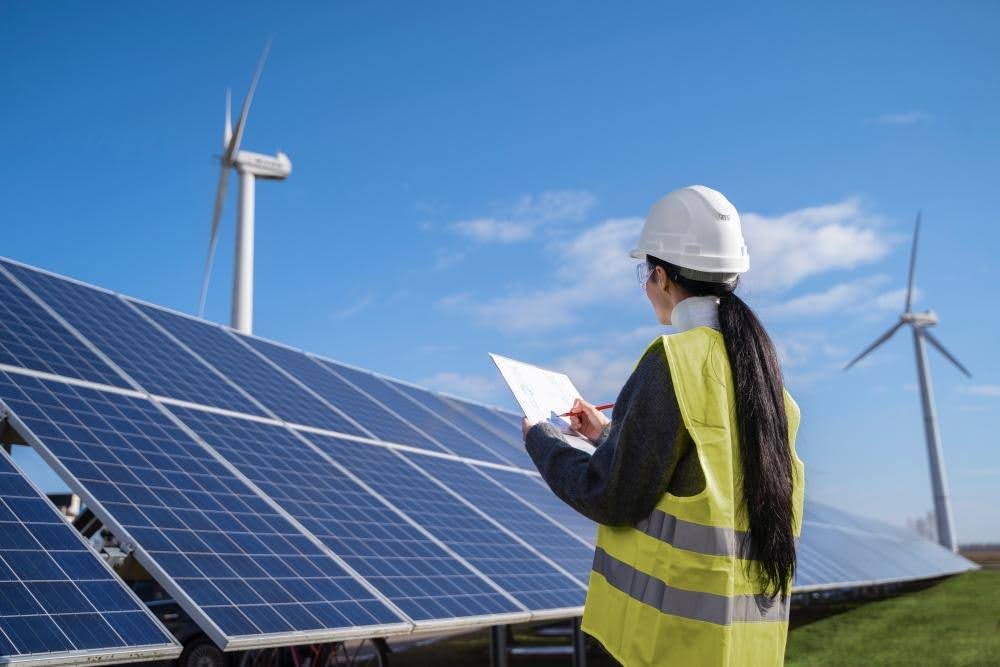
The renewable energy market is experiencing rapid growth, driven by increasing concerns about climate change and the desire for sustainable energy solutions. Within this dynamic landscape, Renewable Energy Certificates (RECs) have emerged as a valuable commodity, enabling individuals and businesses to support renewable energy development and contribute to a cleaner future.
But how does one take part in selling renewable energy credits? This guide provides a step-by-step walkthrough on how to sell RECs, empowering renewable energy producers to unlock the value of their green energy assets and participate in this growing market.
Step 1: Registering Your Renewable Energy Assets
Before you can begin selling RECs, it is essential to register your renewable energy assets with a recognised REC registry. This registration process verifies the legitimacy of your renewable energy generation and ensures that the RECs you generate are credible and traceable.
Choosing a reputable partner to support the registration process, such as a REC company in Singapore, is also crucial for ensuring the integrity of your RECs and maximising their value in the market. For instance, REDEX offers comprehensive asset registration and verification services, streamlining the process and ensuring compliance with industry standards.
Step 2: Understanding REC Types and Eligibility
Different types of RECs products exist, each with its own specific market standards. For instance, I-REC(E) certificates are internationally recognised certificates that track renewable energy generation and consumption in more than 60 countries. Meanwhile, GOs (Guarantees of Origin) are primarily used within the European Union to certify the origin of electricity.
As such, understanding the different types of RECs and their market standards is crucial for ensuring that you generate and sell RECs that meet market demand and regulatory standards. For example, if you are a solar energy producer in Singapore looking to sell your RECs to companies based in Singapore, you would need to ensure your RECs meet the criteria for Singapore Standard SS 673.
Step 3: Navigating the REC Marketplace
The REC marketplace is a dynamic environment with various trading options and a diverse range of buyers and sellers. Choosing a suitable platform for selling your RECs is crucial for maximising your revenue and ensuring a smooth transaction process. Some factors to consider are transaction fees, market liquidity, buyer preferences, and the platform’s reputation and security measures.
If you are looking for a secure and transparent platform for renewable energy trading, REDEX can help connect and facilitate transactions. REDEX’s REhash platform offers competitive fees, a wide range of RECs, and a user-friendly interface to help you navigate the REC market.
Step 4: Listing Your RECs for Sale
Once you have chosen a trading platform like REHash, it is time to list your RECs for sale. Creating clear and informative REC listings is essential for attracting potential buyers and securing competitive prices. Essential REC information to include are origin, generation technology (solar, wind, etc), and vintage. Setting competitive prices that reflect market trends and buyer demand is also crucial for maximising your revenue.

Step 5: Completing the Sale and Managing Revenue
When a buyer expresses interest in your RECs, it is important to follow secure transaction practices to ensure a smooth and successful sale. This includes agreeing on payment terms, transferring REC ownership through the trading platform and maintaining proper records of the transaction. Managing your REC revenue effectively is also essential for reinvesting in your renewable energy projects and maximising your long-term returns.
Start Selling Your RECs Today
Selling RECs with REDEX is a seamless process that can provide significant benefits for renewable energy producers. By following these steps and leveraging REDEX’s platform and services, you can unlock the value of your renewable energy assets and contribute to a more sustainable future. Take the first step today and begin generating revenue from your green energy.

